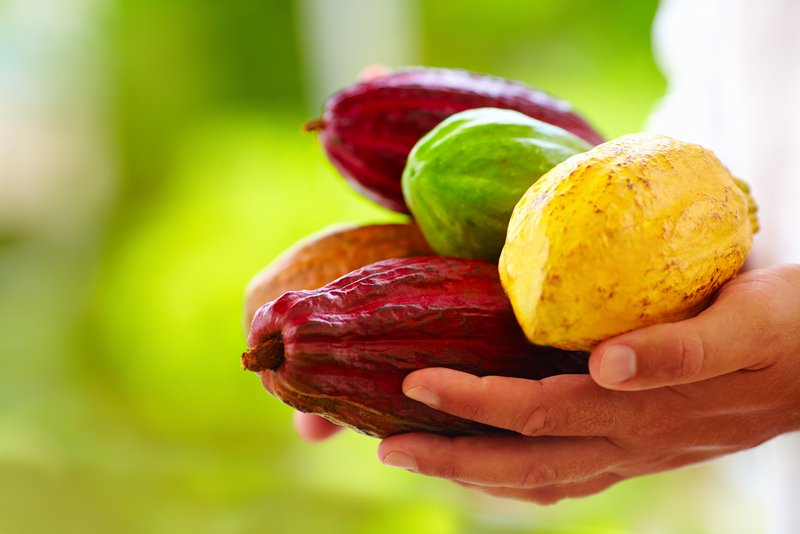Search

The Future of Chocolate
May 21, 2024 3 min read
400% cost increase in the cocoa market in the last few months? Here are some insights as to what is happening...
The conclusion is that yes, we will all need to pay more for our chocolate in the coming years. The levels may settle next year but it will never return to the prices we have been used to. And, for some reasons, we should not want it to.
 Our social and economic health – for the sake of farmers, chocolatiers and chocolate lovers alike. After almost 50 years of trading cocoa at an average $2,500 per ton, the natural inflation of most other commodities suggests that we should be paying over $20,000 not just the $10,000 record we have surpassed recently. Would it surprise you that cocoa (or rather the cacao plant) is known as a “poor man’s crop”; that desperation rather than commercial viability has been the motivator for farmers for years; or that vast areas of cocoa plantation have been lost over the decades as no longer viable?
Our social and economic health – for the sake of farmers, chocolatiers and chocolate lovers alike. After almost 50 years of trading cocoa at an average $2,500 per ton, the natural inflation of most other commodities suggests that we should be paying over $20,000 not just the $10,000 record we have surpassed recently. Would it surprise you that cocoa (or rather the cacao plant) is known as a “poor man’s crop”; that desperation rather than commercial viability has been the motivator for farmers for years; or that vast areas of cocoa plantation have been lost over the decades as no longer viable?
For mankind to be able to afford to grow and to buy healthy chocolate, not compound chocolate watered down with fats and excess sugar, we do need to be paying a more reasonable price than we have been. While the recent trading price hikes were inevitable, it is largely the hedge fund managers that have reaped enormous rewards by cornering a struggling commodity. Farmers pre-selling their crop at last year’s price miss out on peaks like this. Some good news last month was that the farmers’ “farmgate” price set by the government in Ivory Coast and Ghana (responsible for the majority of the world’s cocoa) has been increased 50% to just under $2,500 per ton. In deregulated, albeit smaller, markets in other countries farmgate prices surpass $5,000 (encouraging cross border smuggling).
While a few regions and organisations such as in Brazil have been investing in expanding cocoa production in anticipation of the current crisis, it is only since the latest increase in value that reports are finally coming in of renewed enthusiasm to plant more cacao trees.

See the price line in red – perhaps more interesting than the leap in recent months is the lack of increase in the preceding decades.
Environmental health – while the hedge fund managers and their profit-driven AI bots have been the reason for the enormous volatility in recent months, it is all based on a genuine lack of cocoa. On one hand it is the decades of economic under-valuing of farmers’ work that has inevitably lead to the growing of cacao not keeping up with the global growth in chocolate consumption. However it is the recent consecutive years of sudden climate change that has compounded crop failures. Of course profit-driven or slash & burn short term land management policies also hugely weaken climate change resilience. This perfect storm has seen the loss of 30 to 50% of crops due excess rain or heat and connected diseases. Global stocks of cocoa have usually covered temporary deficits, but cannot do so indefinitely and are now at record lows. For the first time in 20 years I have had to secure multiple cocoa contracts a year and a half in advance just to ensure we don’t run out of the ingredients to make the Velvet Truffles for you!
 What is Coming?
What is Coming?
So perhaps this is a correction to the fair price we should have already been paying. The result will be reliably more cocoa, more supportive of livelihoods, and that all leads to higher quality chocolate for the long term. Initiatives like the EU Deforestation Regulation will help in ways such as governance, while others such as the Cocoa Horizons initiative, which the Highland Chocolatier is signatory to, ensures practical support for environmental sustainability, community development, and protecting workers. We are proud to pay a premium for a higher quality of cocoa – easily double what other chocolatiers pay – but genuine and sustained improvement to lives of people in cocoa growing communities, our local community and yours, requires multiple approaches. We decided several years ago to start donating a percentage of our profits to the Nyimdzi Foundation in Ghana to directly support grassroot educational programmes for youth.
We have been absorbing much of the energy, wage, packaging and ingredient increases over the last 4 years – to the extent where our price increases have even been below inflation. We will never cut costs by buying ingredients with poorer flavour, or spending less time on the artisanal skills required to achieve excellence that you can taste. However these massively increased new levels of cocoa cost will need to be reflected in our prices soon and that is where, as a consumer of chocolate myself, we can each play our part.

Sign up to get the latest on sales, new releases and more …





